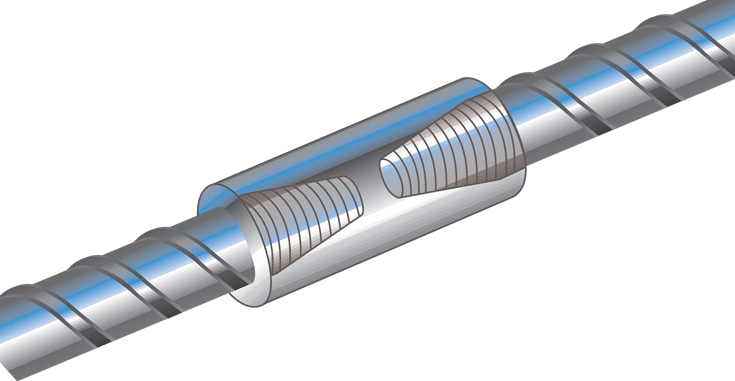Rebar couplers, or mechanical splices, are used in reinforced concrete structures to join two TMT bars for continuous reinforcement. They are a cost-effective alternative to the system of lapping and welding in reinforcement. When choosing the right rebar coupler for your project, there are several factors to consider, including the type of coupler, the material, the dimensions, the application, and the installation process.
Types of Rebar Couplers
Several types of couplers for rebar are available, each with its advantages and disadvantages. The most common types include:
- Threaded rebar coupler
- Roll thread coupler
- Cold forged rebar coupler
- Non-threaded coupler
- Crimping rebar coupler
- MBT rebar coupler
Material
Rebar couplers are typically made of cast iron, mild steel, stainless steel, carbon steel, copper, or aluminium. The choice of material will depend on the specific requirements of your project, such as the strength, durability, and corrosion resistance needed.
Dimensions
Rebar couplers come in various sizes, ranging from 12mm to 50mm in diameter. Selecting the appropriate size for your project to ensure a secure connection between the reinforcing bars is important.
Application
Rebar couplers are used in various construction applications, including building construction, bridges, dams, and towers. They are particularly useful when a long length of the bar is required or when joining additional bars.
Installation Process
The installation process for rebar couplers can vary depending on the type of coupler chosen. For example, with a roll thread coupler, the ends of the TMT bars are threaded into a roll thread machine, while with a cold forged coupler, the end of the TMT bar is forged using a hydraulic pressure machine. It is important to follow the manufacturer’s instructions for the specific type of coupler you are using to ensure proper installation.
Quality, Durability, and Cost
Look for couplers that meet or exceed international standards and certification requirements, such as ISO 15835 or ASTM A1034. Additionally, consider the cost of the couplers and how they fit into your project budget.
Testing and Standards
To ensure the safety and performance of rebar couplers, they are typically subjected to various tests, including cyclic tensile tests, low and high cycle fatigue tests, static tensile tests, and yield strength tests. It is important to select couplers that have been properly tested and certified to ensure they meet the required standards for your project.
Advantages of Rebar Couplers
Rebar couplers offer several advantages over traditional lapping and welding methods, including improved quality control, proper load transfer, reduced congestion, increased work speed, and enhanced structural integrity. They are also more economical and reduce waste compared to other joint systems.
Disadvantages of Rebar Couplers
Some potential disadvantages of rebar couplers include the possibility of misalignment during installation, limited availability of larger diameter couplers, the need for skilled labour during assembly, and the potential for structural damage if the grade of the coupler does not match the reinforcement bars.
By selecting a high-quality, tested, and certified rebar coupler that meets the relevant standards, you can ensure your reinforced concrete structure’s safety and performance while reducing costs and improving efficiency.




